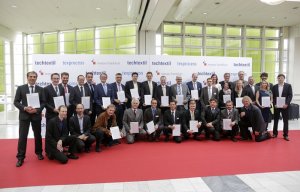
Techtextil Innovation Award 2017 to honour new developments
The new system records an electrocardiogram (ECG) of the wearer, and is self-moistening, which is essential for reliable signal monitoring.
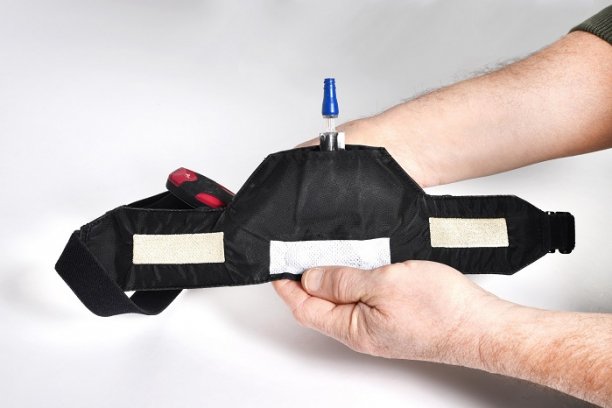
6th May 2015
Innovation in Textiles
|
Dubendorf
A team of Empa scientists, together with industrial partners, has developed a novel chest strap device for the long-term monitoring of patients with heart and circulatory problems, which has been recognised with a Techtextil Innovation Award 2015 at the Techtextil trade fair that is taking place in Frankfurt this week.
The new system records an electrocardiogram (ECG) of the wearer, and is self-moistening, which is essential for reliable signal monitoring.
The demand for ECG monitoring systems is increasing, and not just because hospitals and rehabilitation clinics are interested in such instruments for the long-term monitoring of patients’ hearts and circulatory systems.
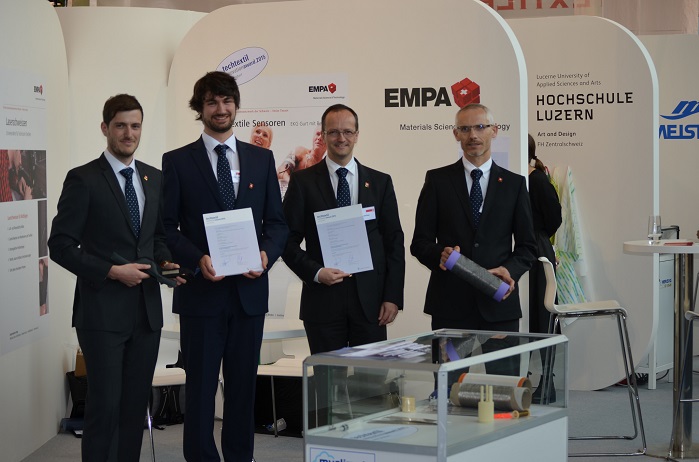
In addition, the trend towards recording and collecting personal health data is booming. To date, however, a major hurdle has been the fact that gel electrodes have been necessary for reliable long-term ECG measurements, but these dry out within 24 hours after which they no longer produce usable signals.
The idea of developing wettable electrodes for an ECG monitor germinated during a project to develop cooling garments for multiple sclerosis patients, in which Empa team collaborated with industrial partners. The pain relieving cooling effect was generated by the material continuously allowing minimal quantities of water to permeate through it. The same technology is suited to keeping heart monitor electrodes moist all the time.
In order for the metalized sensors to detect and transmit signals from the body in a reliable and stable manner, the space between the electrode and the skin must be kept slightly moist. This is akin to the human sweating process without the cooling effect, and is maintained at such a minimal level that the wearer of the chest strap does not notice the moistening process at all.
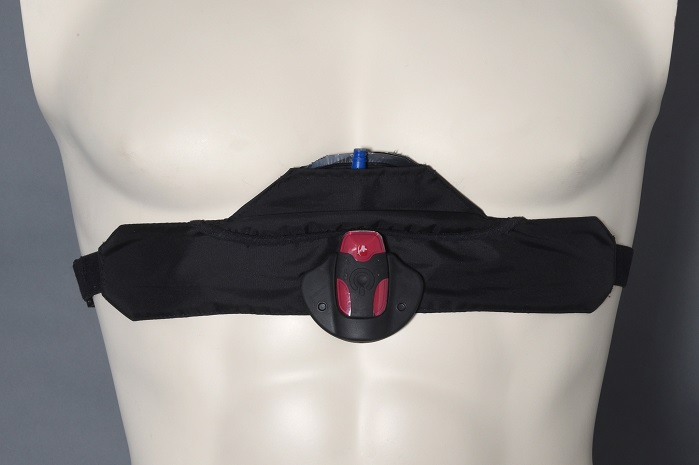
In order to create this effect a team from Empa’s Protection and Physiology laboratory, in a project financially supported by the Swiss Commission for Technology and Innovation (CTI), developed flexible wetting elements. These are filled with 30 ml of water and they then ensure that the skin of the wearer is kept permanently moist. The reservoir is a hollow space between a watertight membrane and a textile layer, which is permeable to water vapour.
The electrodes are capable not only of acquiring the wearer’s heart signals but also all the other bodily signals which are necessary for cardiological analysis. The interleaved fibre is made of polyethylene terephthalate (PET) and is given a special plasma coating by scientists from Empa’s Advanced Fibers laboratory using equipment developed by them.
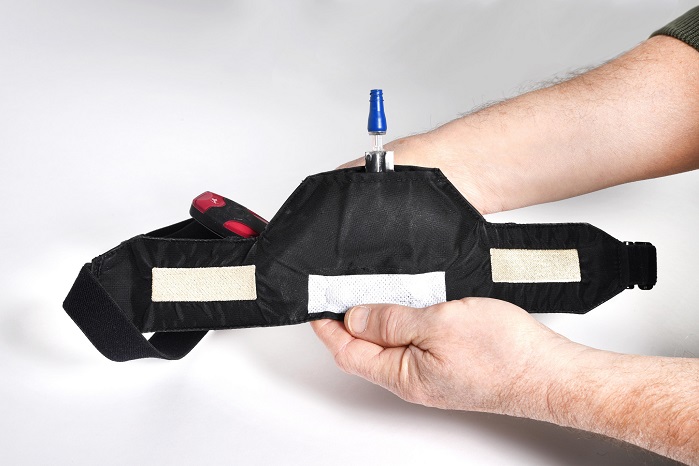
The coating on the fibre is extremely thin, a mere 100nm or so, and consists of two layers. An inner layer of silver serves to conduct the electrical signals and prevent the growth of microorganisms, while the outer layer of titanium, just a few nanometres thick, is said to ensure signal stability and prevent skin irritation occurring and the release of silver particles.
Each chest strap contains two of the specially prepared sensor pads, which are connected directly to a data logger. The recorded signals are transmitted on to a central data collection unit or a standard monitoring device.
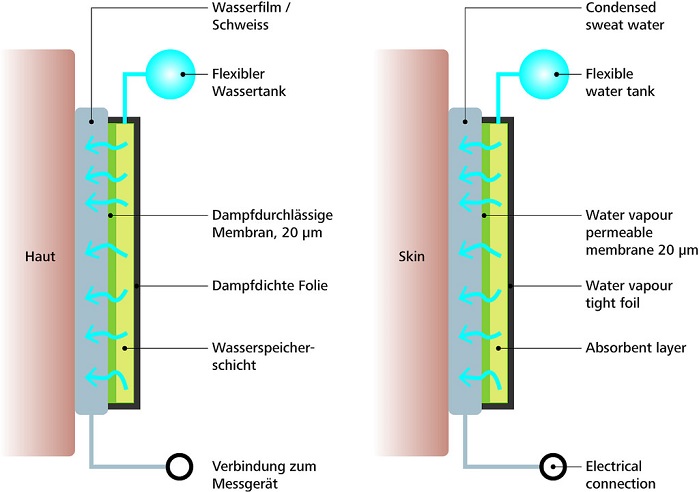
The data logger is attached with snap fasteners so it can be removed in order for the belt to be washed – one of the stringent conditions which the system had to fulfil before it was authorized for use in long-term ECG monitoring for medical purposes.
The device has already been tested in the course of over 100 experiments with volunteer subjects. It will, however, be some time before the system is available on the market since the project is still in the prototype phase.

Business intelligence for the fibre, textiles and apparel industries: technologies, innovations, markets, investments, trade policy, sourcing, strategy...
Find out more